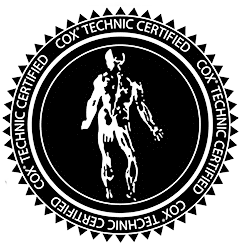How Can Chiropractic Care in Sandy Springs GA Help You?
Most people are under the impression that chiropractic care is only for back pain. This is a common misconception as issues such as carpal tunnel, work injuries, auto injuries, and many others can be treated through a chiropractic-based approach.
WHAT IS THE COX TECHNIC?
The Cox Technic is a chiropractic method designed to alleviate spinal pain, particularly in the lower back and neck. It involves the use of a specialized table that allows controlled and gentle stretching of the spine. The chiropractor applies hands-on manipulation and controlled traction to the affected area, aiming to decompress the spinal discs, improve mobility, and relieve pain associated with conditions such as disc herniations, sciatica, and spinal stenosis.
The certification process for Cox Technic involves undergoing specialized training and post-graduate education in this chiropractic method. Chiropractors interested in becoming certified in the Cox Technic attend seminars, workshops, or courses provided by the Cox Technic organization.


The History of Chiropractic Care
Daniel David Palmer developed the methods of the modern-day chiropractic field. The first ever chiropractic patient was a janitor who was partially deaf. Palmer completed a simple spinal adjustment and the janitor claimed his hearing was improved due to the treatment.
Palmer went on to open the first school for chiropractic within the next two years. Since 1895, chiropractic care has become one of the most effective non-invasive treatment options for patients living with a wide variety of issues. Spinal adjustments have been used to help people of all ages overcome the discomfort in their lives and allow them to get back to doing the activities they enjoy.

"A great place for a body tune-up! Body, mind, and soul healing! Love this place!"
Nilsa C.
"These guys have the experience and proven results that you should expect when you trust someone with your health care! Definitely five stars! Highly recommended!"
Bryce A.


















